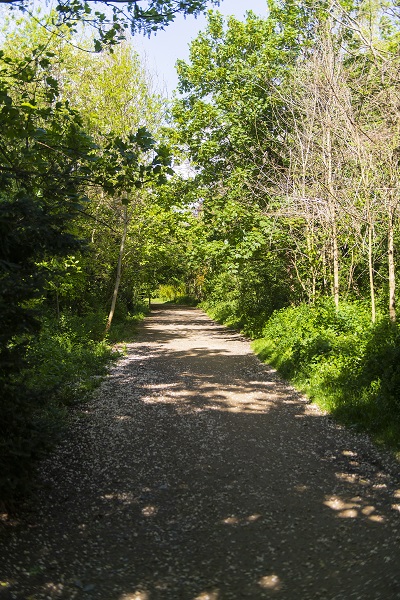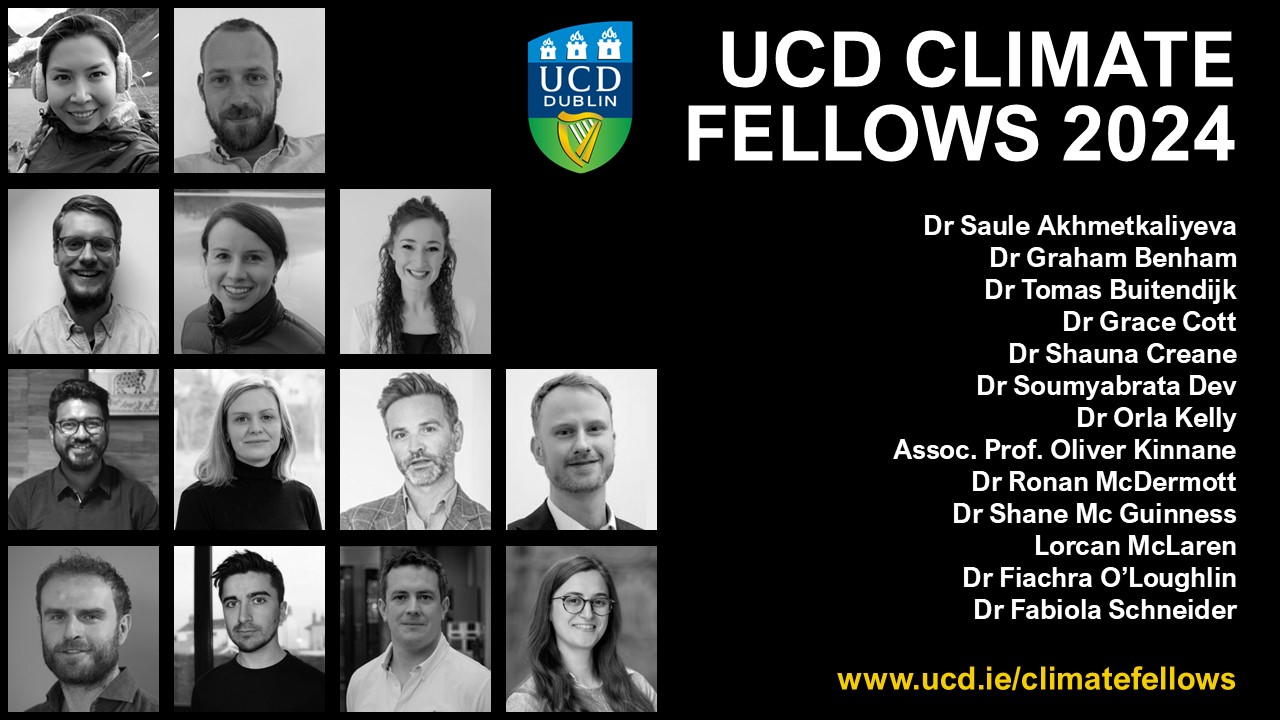Join us on this short audio trail to hear from UCD staff and researchers about how the Belfield campus is managed to support biodiversity, ongoing biodiversity research and steps you can take to support biodiversity at home. Brought to you by UCD Earth Institute and UCD Research.
 |
| University College Dublin/Vincent Hoban |
Biodiversity is all the different kinds of life you’ll find in one area—the variety of animals, plants, fungi, and even microorganisms like bacteria that make up our natural world.
Each of these species and organisms work together in ecosystems, like an intricate web, to maintain balance and support life. Biodiversity supports everything in nature that we need to survive: food, clean water, medicine, and shelter.
But as humans put increasing pressure on the planet, using and consuming more resources than ever before, we risk upsetting the balance of ecosystems and losing biodiversity.
Join us on this short audio trail to hear from UCD staff and researchers about how the Belfield campus is managed to support biodiversity, ongoing biodiversity research and steps you can take to support biodiversity at home.
The audio trail is narrated by Dr Karen Foley, a lecturer in Landscape Architecture in UCD and Earth Institute member.
Contributors: Veronica Braga, Finbarr Brereton, Ed Cox, Karen Foley, Adam Kane, Brendan O’Neill, Noeleen Smyth, Dara Stanley, and Brian Tobin.
Thanks to: Lucy Collins, Irish Poetry Reading Archive; Michael Longley; Críostóir Mac Cárthaigh and Jonny Dillon, National Folklore Collection; and UCD Estates.
Interactive Map
Biodiversity Trail leaflet
Audio Trail
Join us on this short audio trail to hear from UCD staff and researchers about how the Belfield campus is managed to support biodiversity, ongoing biodiversity research and steps you can take to support biodiversity at home.
The audio trail is narrated by Dr Karen Foley, a lecturer in Landscape Architecture in UCD and Earth Institute member, and includes directions to navigate between each stop. The audio trail can be downloaded or listened to either as a single file or as individual contributions.
Individual contributions
Start at UCD Research at the Tierney Building, near the Main Lake and the James Joyce Library. Please pause the audio while moving along the trail from one stop to the next.
- Karen Foley - Introduction and welcome to the tour
- Adam Kane – Birds and gulls
- Finbarr Brereton and Noeleen Smyth – Managed spaces, lawns and wildflowers
- Noeleen Smyth – Clover
- Noeleen Smyth – Leaving spaces for nature
- Dara Stanley – Pollinators and plants
- Karen Foley – Reading history through landscape
- Ed Cox – Fresh Water: the secret lake
- Brian Tobin – Managing urban woodland
- Brendan O’Neill – Hazel and the archaeology of trees
- Michael Longley – Badger poem
- Finbarr Brereton – Wellbeing and the woodland walk
- National Folklore Collection – Holly and the everyday uses of trees and plants
- Veronica Braga – Managing the campus for biodiversity
- Karen Foley - Conclusion
1. Introduction and welcome to the tour - Dr Karen Foley, Landscape Architecture
Directions to the next stop: Our trail starts here at the UCD Research offices in the Tierney Building, close to the UCD main lake and adjacent to the James Joyce library. We will walk down the steps to the lake, and keeping the lake on your right, head to the corner of the lake and our first stop. Back to top
2. Birds and gulls - Dr Adam Kane, Biology and Environmental Science
Directions to the next stop: Head up the steps or ramp in front of you and turn right, keeping the lake on your right hand side, and follow the path until you reach the next stop marked on a raised area of grass on your right hand side, opposite the O’Brien Science Centre. Back to top
3. Managed spaces, lawns and wildflowers - Dr Finbarr Brereton, Planning and Environmental Policy, and Dr Noeleen Smyth, Agriculture and Food Science
Directions to the next stop: Follow the edge of the lake towards the University Club and take a slight left past the Veterinary Science building and our next stop is at the bike racks on the right-hand side. Back to top
4. Clover - Dr Noeleen Smyth, Agriculture and Food Science
Directions to the next stop: Follow the sloped path between two buildings and stop at the unmanaged spaces at the bottom of the slope with bicycle parking on the right-hand side. Back to top
5. Leaving spaces for nature - Dr Noeleen Smyth, Agriculture and Food Science
Directions to the next stop: Follow the path towards the pedestrian crossing in front of the Conway Institute. Use the pedestrian crossing and turn right and follow the footpath towards Woodview House and take the path on the left-hand side (before Woodview House) to follow the gravel path loop around the Conway wildflower meadow. Back to top
6. Pollinators and plants - Dr Dara Stanley, Agriculture and Food Science
Directions to the next stop: Leave the wildflower meadow where you entered and continue on the tarmac path past Woodview House until you reach a sign for veteran trees on your left. Back to top
7. Reading history through landscape - Dr Karen Foley, Landscape Architecture
Directions to the next stop: Follow the tarmac path down the slope and join the sandy gravel path until you come to a bridge over the small lake. Back to top
8. Fresh Water: the secret lake - Ed Cox, Biology and Environmental Science
Directions to the next stop: Now follow the path to the right as it joins the woodland trail. Back to top
9. Managing urban woodland - Dr Brian Tobin, Agriculture and Food Science
Directions to the next stop: Continue along the woodland trail path to the next sign. Back to top
10. Hazel and the archaeology of trees - Dr Brendan O’Neill, Archaeology
Directions to the next stop: Continue along the woodland trail path the next sign. Back to top
11. Badger poem - Professor Michael Longley, Poetry
This recording of Michael Longley reading his poem Badger is taken from the Irish Poetry Reading Archive, a free, web-based library that holds recordings of Irish poets reading their own work, maintained by the UCD Library. The full video of Michael Longley's reading is available on the UCD Library Special Collections Youtube channel - many thanks to Michael Longley, Lucy Collins, the IPRA and UCD Library for their permission to reproduce the reading here.
Directions to the next stop: Continue along the woodland trail path to the next trail sign. Back to top
12. Wellbeing and the woodland walk - Dr Finbarr Brereton, Planning and Environmental Policy
Directions to the next stop: Continue along the woodland trail path to the next trail sign. Back to top
13. Holly and the everyday uses of trees and plants - National Folklore Collection
This an excerpt of an archival recording from the National Folklore Collection of Bill Egan of Clonfinlough, County Offaly, from 18 July 1973 discussing traditional uses of holly. The National Folklore Collection, housed and managed by UCD Library, aim to collect, preserve and disseminate the oral tradition of Ireland and is one of the largest folklore collections in the word. This excerpt is reproduced here with the kind permission of the National Folklore Collection.
Directions to the next stop: Take the right-hand path off the woodland trail into the car park and stop next to the University Veterinary Hospital on your right-hand side. Back to top
14. Managing the campus for biodiversity - Veronica Braga, Estates
Directions to the next stop: Take the right hand path off the woodland trail into the car park and walk up towards the lake and the Science Centre. Stop as the University Club building is on your left. Back to top
15. Conclusion - Dr Karen Foley, Landscape Architecture
Thank you for taking the time to explore biodiversity at UCD with us in all its different forms. We hope to continue to research and teach about these important issues. UCD’s Earth Institute is home to a lot of research and teaching on biodiversity, and if you’d like to know more about this and what the Earth Institute does, visit our website at ucd.ie/earth. If you enjoyed this audio tour, get in touch and let us know!


